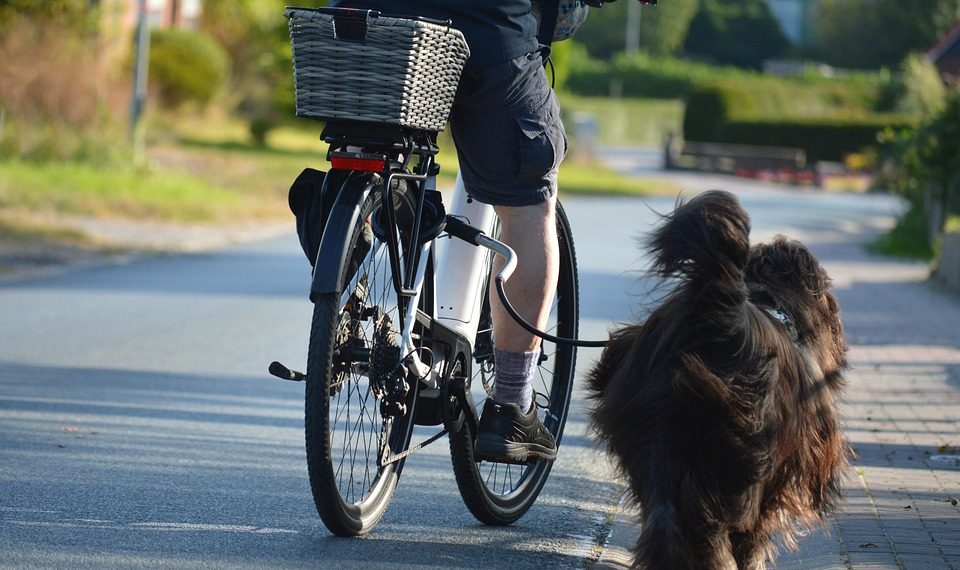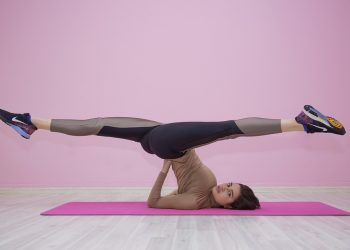Ever hopped off your bike after a long ride and felt like you might need a crowbar to get your legs moving again? You’re not alone. Many cyclists experience tightness in their joints and muscles, which can hinder performance and increase the risk of injury. But don’t worry—stretching can help! In this article, we’ll dive into five effective stretching routines specifically designed to boost joint flexibility for cyclists.
Contents
Why Flexibility Matters for Cyclists
Before we get into the routines, let’s chat about why flexibility is essential. Cycling requires repetitive movements that can lead to muscle tightness and joint stiffness. Improved flexibility can enhance your range of motion, reduce the risk of injury, and even lead to better performance on the bike. It’s like giving your body a little tune-up!
Research shows that flexibility training can improve athletic performance and decrease injury risk (Behm & Chaouachi, 2011). So, if you want to keep pedaling strong, it’s time to stretch!
1. Dynamic Warm-Up Routine
What It Is
Dynamic stretching involves active movements that help warm up your muscles and joints. Unlike static stretches, which you hold for a period, dynamic stretches keep you moving. This routine is perfect before you hit the road or trail.
Routine Steps
- Leg Swings: Stand next to a wall or a tree for support. Swing one leg forward and backward for 10-15 swings. Switch legs.
- Walking Lunges: Step forward into a lunge, keeping your front knee over your ankle. Alternate legs for about 10 lunges.
- High Knees: Jog in place, bringing your knees up to your chest. Aim for 30 seconds.
- Butt Kickers: Jog in place again, but this time kick your heels toward your glutes. Do this for 30 seconds.
Pros and Cons
Pros:
- Increases blood flow to muscles.
- Prepares your body for the cycling motion.
- Can be done anywhere.
Cons:
- Might not be suitable for everyone, especially those with joint issues.
2. Hamstring Stretch Routine
What It Is
Tight hamstrings can affect your cycling posture and efficiency. This routine focuses on stretching the hamstrings, which can help improve your cycling performance.
Routine Steps
- Standing Hamstring Stretch: Stand tall, then hinge at your hips and reach for your toes. Hold for 20-30 seconds.
- Seated Hamstring Stretch: Sit with one leg extended and the other bent. Reach toward the toes of the extended leg for 20-30 seconds.
- Lying Hamstring Stretch: Lie on your back and lift one leg, holding it with a strap or your hands. Hold for 20-30 seconds.
Pros and Cons
Pros:
- Targets the often-overlooked hamstrings.
- Can help alleviate lower back pain.
Cons:
- Overstretching can lead to injury.
3. Hip Flexor Stretch Routine
What It Is
Cycling can tighten your hip flexors, which can lead to discomfort and poor posture. This routine focuses on loosening these important muscles.
Routine Steps
- Kneeling Hip Flexor Stretch: Kneel on one knee with the other foot in front, and push your hips forward. Hold for 20-30 seconds on each side.
- Pigeon Pose: From a plank position, bring one knee forward and extend the other leg back. Hold for 20-30 seconds on each side.
- Butterfly Stretch: Sit with the soles of your feet together and gently press your knees toward the ground. Hold for 20-30 seconds.
Pros and Cons
Pros:
- Addresses tightness that can lead to poor cycling form.
- Improves overall hip mobility.
Cons:
- Some may find certain poses difficult or uncomfortable.
4. Quadriceps Stretch Routine
What It Is
Tight quads can affect your pedaling efficiency and lead to knee pain. This routine helps stretch and relax these muscles.
Routine Steps
- Standing Quad Stretch: Stand on one leg, grab your opposite ankle, and pull it toward your glutes. Hold for 20-30 seconds on each side.
- Lying Quad Stretch: Lie on your side and pull your top foot toward your glutes. Hold for 20-30 seconds on each side.
- Wall Quad Stretch: Stand next to a wall for support and bring one foot up toward your glutes, holding it with your hand. Hold for 20-30 seconds on each side.
Pros and Cons
Pros:
- Helps maintain knee health.
- Simple and effective.
Cons:
- Can be challenging for those with balance issues.
5. Calf Stretch Routine
What It Is
Strong calves are vital for effective cycling. This routine focuses on stretching the calves to improve flexibility and prevent cramps.
Routine Steps
- Wall Calf Stretch: Stand facing a wall, place one foot behind the other, and lean into the wall. Hold for 20-30 seconds on each side.
- Seated Calf Stretch: Sit with your legs extended and loop a towel around one foot, pulling it towards you. Hold for 20-30 seconds on each side.
- Downward Dog: From a plank position, lift your hips up and back, pressing your heels toward the ground. Hold for 20-30 seconds.
Pros and Cons
Pros:
- Targets often-neglected calf muscles.
- Can be done as part of a cool-down routine.
Cons:
- Might not be effective for everyone, especially if done incorrectly.
FAQs
How often should I stretch as a cyclist?
Aim to stretch after every ride and incorporate flexibility routines at least 2-3 times a week. Consistency is key!
Can I stretch before cycling?
Yes! Dynamic stretching is great before cycling, while static stretching should be saved for after your ride.
What if I feel pain while stretching?
Listen to your body. Stretching should feel good, not painful. If you experience pain, ease off and consult a professional.
How long should I hold each stretch?
Aim for 20-30 seconds for static stretches. If you’re doing dynamic stretches, focus on repetitions rather than duration.
Conclusion
Cycling is a fantastic way to stay fit and enjoy the outdoors, but it can take a toll on your joints and muscles if you’re not careful. Incorporating these stretching routines into your regimen can help you maintain joint flexibility and improve your overall cycling performance. Remember, it’s about balance—between cycling hard and taking care of your body.
So, grab your bike, get stretching, and hit the road with newfound flexibility!
Disclaimer: This article is for educational purposes only and is not a substitute for professional medical advice. Always consult a qualified healthcare provider before making changes to your health routine.
References
-
Behm, D. G., & Chaouachi, A. (2011). A review of the acute effects of static and dynamic stretching on performance. European Journal of Applied Physiology, 111(11), 2633–2651. https://doi.org/10.1007/s00421-011-1879-2
-
Mayo Clinic. (2021). Stretching: Focus on flexibility. https://www.mayoclinic.org/healthy-lifestyle/fitness/in-depth/stretching/art-20046094
-
Harvard Health Publishing. (2020). The benefits of stretching. https://www.health.harvard.edu/exercise-and-fitness/the-benefits-of-stretching
Get Your FREE Natural Health Guide!
Subscribe now and receive our exclusive ebook packed with natural health tips, practical wellness advice, and easy lifestyle changes — delivered straight to your inbox.















